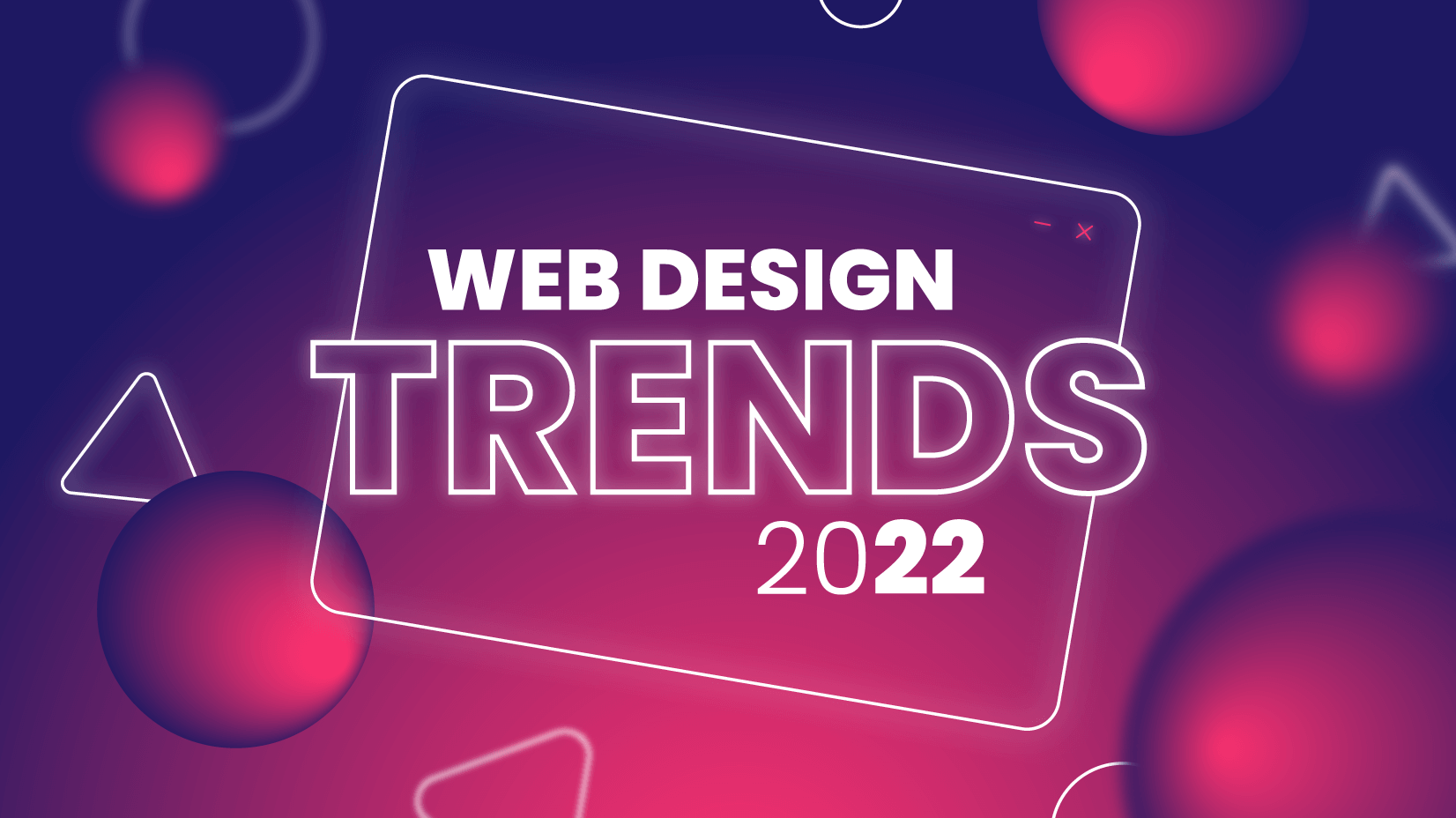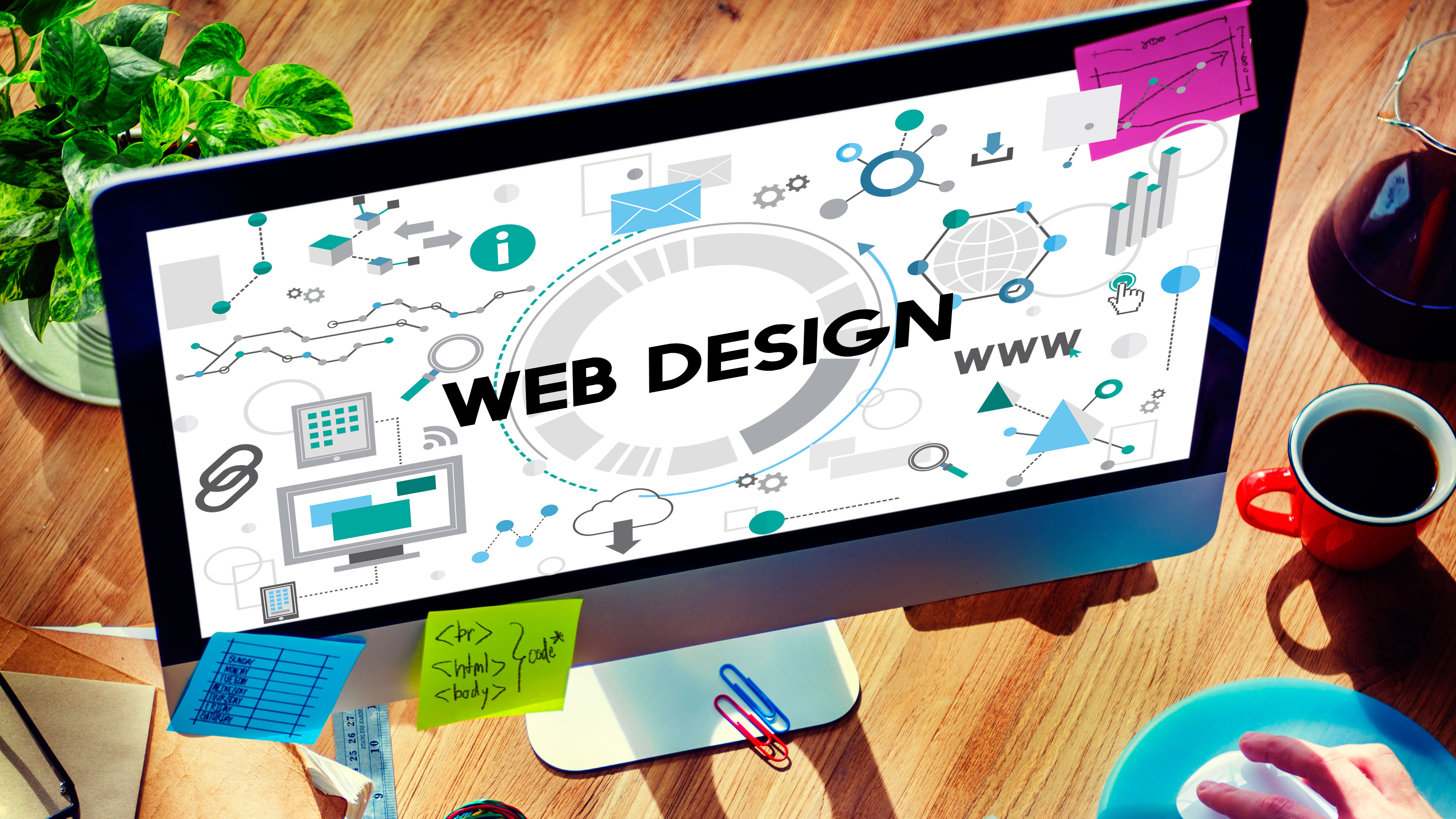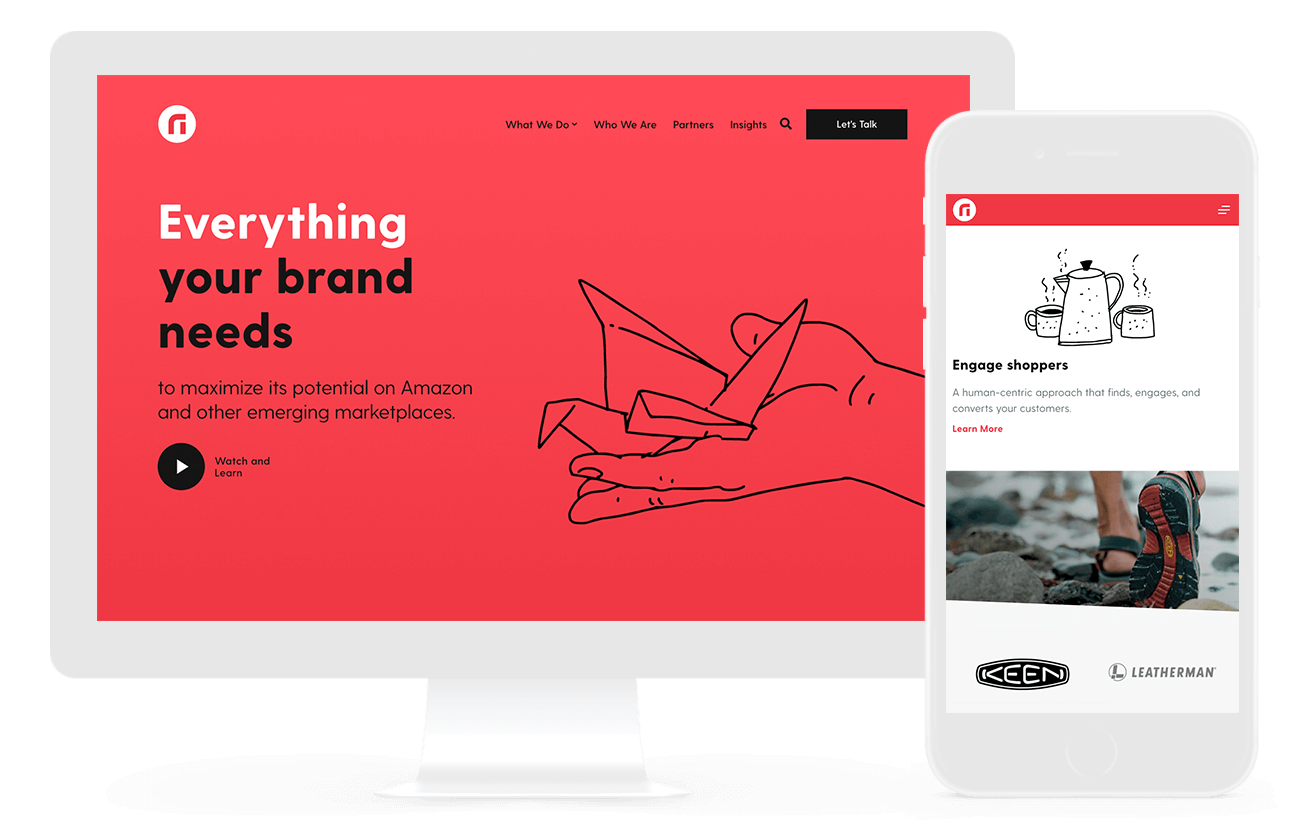All Categories
Featured
Table of Contents
- – Mrw Web Design - Wordpress Websites For Nonpro...
- – Web Design Service - Professionally Designed ...
- – Trajectory: Atlanta Web Design Company Tips a...
- – Web Design - Linkedin Learning, Formerly Lynd...
- – Web Design Museum 1991 – 2006 Tips and Tricks:
- – Custom Web Design, Development & Digital Mark...
- – Web Design Vs. Web Development - Upwork Tips...
- – What Is Web Design? The Ultimate Guide To We...
- – Web Design - Linkedin Learning, Formerly Lyn...
- – Figma: The Collaborative Interface Design To...
- – Top 30 Web Design Companies - Apr 2022 - Des...
Mrw Web Design - Wordpress Websites For Nonprofits ... Tips and Tricks:
Quick summary Usability and the utility, not the visual design, figure out the success or failure of a website. Because the visitor of the page is the only person who clicks the mouse and therefore chooses everything, user-centric style has developed as a basic technique for successful and profit-oriented website design - web design frederick md.
and the utility, not the visual style, identify the success or failure of a site. Considering that the visitor of the page is the only person who clicks the mouse and therefore chooses everything, user-centric style has ended up being a standard approach for effective and profit-oriented website design. After all, if users can't use a feature, it may too not exist.
g. where the search box must be put) as it has currently been carried out in a number of articles; rather we concentrate on the methods which, used properly, can result in more advanced style choices and simplify the procedure of viewing provided information. Please see that you might be thinking about the usability-related articles we have actually released before: Concepts Of Good Website Design And Reliable Web Design Guidelines, In order to use the concepts properly we first need to understand how users communicate with sites, how they think and what are the standard patterns of users' habits.
Web Design Service - Professionally Designed Websites Tips and Tricks:
Visitors glance at each new page, scan a few of the text, and click on the first link that catches their interest or slightly looks like the important things they're looking for. There are big parts of the page they don't even look at. The majority of users browse for something fascinating (or beneficial) and clickable; as quickly as some appealing candidates are found, users click.
If a page provides users with high-quality material, they want to jeopardize the content with advertisements and the style of the website. This is the reason that not-that-well-designed websites with top quality material get a great deal of traffic over years. Material is more important than the style which supports it.

Really easy concept: If a site isn't able to fulfill users' expectations, then designer stopped working to get his task done appropriately and the company loses cash. The greater is the cognitive load and the less instinctive is the navigation, the more willing are users to leave the website and search for options.
Trajectory: Atlanta Web Design Company Tips and Tricks:
Neither do they scan web page in a linear fashion, going sequentially from one website area to another one. Instead users satisfice; they choose the very first affordable option. As quickly as they find a link that seems like it may result in the objective, there is an excellent chance that it will be right away clicked.
It does not matter to us if we understand how things work, as long as we can utilize them. If your audience is going to act like you're creating billboard, then design fantastic signboards." Users want to have the ability to manage their internet browser and rely on the constant data presentation throughout the site.
If the navigation and website architecture aren't instinctive, the variety of concern marks grows and makes it harder for users to understand how the system works and how to get from point A to point B. A clear structure, moderate visual hints and easily recognizable links can assist users to discover their course to their objective.
Web Design - Linkedin Learning, Formerly Lynda.com Tips and Tricks:

Because users tend to check out sites according to the "F"-pattern, these three declarations would be the very first elements users will see on the page once it is loaded. The style itself is basic and user-friendly, to comprehend what the page is about the user requires to search for the answer.
Once you have actually achieved this, you can communicate why the system is useful and how users can benefit from it. People won't use your website if they can't find their way around it. 2. Do Not Waste Users' Patience, In every job when you are going to provide your visitors some service or tool, try to keep your user requirements minimal.
Newbie visitors are ready to, not filling long web kinds for an account they may never ever use in the future. Let users explore the website and find your services without requiring them into sharing personal information. It's not reasonable to force users to enter an email address to test the function.
Web Design Museum 1991 – 2006 Tips and Tricks:
And that's what you desire your users to feel on your web website. The registration can be done in less than 30 seconds as the type has horizontal orientation, the user does not even require to scroll the page.
A user registration alone is adequate of an obstacle to user navigation to minimize inbound traffic. 3. Manage To Focus Users' Attention, As sites offer both static and vibrant material, some aspects of the user interface attract attention more than others do. Obviously, images are more captivating than the text simply as the sentences marked as strong are more appealing than plain text.
Focusing users' attention to specific areas of the website with a moderate usage of visual elements can help your visitors to get from point A to point B without thinking about how it really is supposed to be done. The less enigma visitors have, the they have and the more trust they can establish towards the company the website represents.
Custom Web Design, Development & Digital Marketing ... Tips and Tricks:
Strive For Feature Exposure, Modern web designs are typically slammed due to their approach of guiding users with visually appealing 1-2-3-done-steps, large buttons with visual impacts etc. From the design viewpoint these aspects really aren't a bad thing.
The website has 9 primary navigation choices which are visible at the very first glimpse. What matters is that the material is well-understood and visitors feel comfy with the way they connect with the system.
com gets directly to the point. No cute words, no exaggerated declarations. Instead a rate: simply what visitors are looking for. An optimum solution for reliable writing is touse short and succinct expressions (come to the point as quickly as possible), use scannable layout (classify the content, utilize multiple heading levels, use visual aspects and bulleted lists which break the circulation of uniform text blocks), usage plain and unbiased language (a promotion does not require to sound like advertisement; offer your users some reasonable and objective reason why they ought to utilize your service or remain on your website)6.
Web Design Vs. Web Development - Upwork Tips and Tricks:
Users are hardly ever on a website to delight in the design; in addition, in most cases they are trying to find the information despite the style - web design frederick md. Pursue simplicity rather of complexity. From the visitors' point of view, the best site style is a pure text, without any advertisements or additional content obstructs matching precisely the inquiry visitors used or the material they have actually been looking for.
Finch clearly presents the details about the site and offers visitors an option of options without overcrowding them with unnecessary material. Not just does it help to for the visitors, but it makes it possible to perceive the info presented on the screen.
Complex structures are more difficult to check out, scan, evaluate and work with. If you have the option between separating two design sections by a noticeable line or by some whitespace, it's normally much better to use the whitespace solution. (Simon's Law): the better you manage to provide users with a sense of visual hierarchy, the simpler your material will be to perceive.
What Is Web Design? The Ultimate Guide To Website Design ... Tips and Tricks:
The exact same conventions and rules ought to be used to all elements.: do the most with the least amount of cues and visual aspects. Four significant points to be considered: simpleness, clarity, distinctiveness, and emphasis. Simplicity consists of only the elements that are essential for interaction. Clearness: all elements should be created so their meaning is not unclear.
Conventions Are Our Friends, Traditional design of website aspects doesn't result in an uninteresting website. In fact, as they reduce the discovering curve, the requirement to figure out how things work. For example, it would be an usability headache if all sites had various visual discussion of RSS-feeds. That's not that different from our routine life where we tend to get used to fundamental concepts of how we organize information (folders) or do shopping (placement of items).
understand what they're anticipating from a site navigation, text structure, search positioning etc. A normal example from use sessions is to equate the page in Japanese (presuming your web users do not know Japanese, e. g. with Babelfish) and supply your usability testers with a task to discover something in the page of various language.
Web Design - Linkedin Learning, Formerly Lynda.com Tips and Tricks:
Test Early, Test Often, This so-called TETO-principle ought to be applied to every web design job as usability tests typically offer into considerable issues and problems related to an offered layout. Test not too late, not too little and not for the wrong reasons.
Some important indicate keep in mind: according to Steve Krug, and screening one user early in the task is much better than testing 50 near the end. Accoring to Boehm's very first law, mistakes are most frequent during requirements and style activities and are the more expensive the later on they are eliminated.
That means that you create something, test it, fix it and after that evaluate it again. There might be issues which haven't been discovered throughout the preliminary as users were practically obstructed by other issues. functionality tests. Either you'll be pointed to the issues you have or you'll be indicated the lack of significant design defects which is in both cases a beneficial insight for your task.
Figma: The Collaborative Interface Design Tool. Tips and Tricks:

This holds for designers too. After you have actually worked on a website for few weeks, you can't observe it from a fresh perspective anymore. You understand how it is constructed and therefore you know precisely how it works you have the wisdom independent testers and visitors of your site wouldn't have.
It can be connected to other areas such as graphic design, user experience, and multimedia arts, but is more appropriately seen from a technological standpoint. It has become a large part of people's everyday lives. It is hard to think of the Internet without animated graphics, different designs of typography, background, videos and music.

During 1991 to 1993 the World Wide Web was born. Text-only pages might be seen using a basic line-mode web browser. There had been no integrated method to graphic style aspects such as images or sounds.
Top 30 Web Design Companies - Apr 2022 - Designrush Tips and Tricks:
The W3C was created in October 1994 to "lead the Web to its full capacity by establishing common protocols that promote its evolution and ensure its interoperability." This prevented any one company from monopolizing a propriety browser and programming language, which might have changed the result of the World Wide Web as a whole.
As this has actually occurred the innovation of the web has actually also proceeded. There have actually also been considerable modifications in the method people utilize and access the web, and this has actually changed how websites are created. Considering that the end of the browsers wars [] brand-new web browsers have been launched. A number of these are open source implying that they tend to have much faster advancement and are more helpful of brand-new standards.
Learn more about Lovell Media Group LLC or TrainACETable of Contents
- – Mrw Web Design - Wordpress Websites For Nonpro...
- – Web Design Service - Professionally Designed ...
- – Trajectory: Atlanta Web Design Company Tips a...
- – Web Design - Linkedin Learning, Formerly Lynd...
- – Web Design Museum 1991 – 2006 Tips and Tricks:
- – Custom Web Design, Development & Digital Mark...
- – Web Design Vs. Web Development - Upwork Tips...
- – What Is Web Design? The Ultimate Guide To We...
- – Web Design - Linkedin Learning, Formerly Lyn...
- – Figma: The Collaborative Interface Design To...
- – Top 30 Web Design Companies - Apr 2022 - Des...
Latest Posts
Web Design Services + Website Development Agency Tips and Tricks:
What Does A Web Designer Do? - Careerexplorer Tips and Tricks:
Web Design Services + Website Development Agency Tips and Tricks:
More
Latest Posts
Web Design Services + Website Development Agency Tips and Tricks:
What Does A Web Designer Do? - Careerexplorer Tips and Tricks:
Web Design Services + Website Development Agency Tips and Tricks: